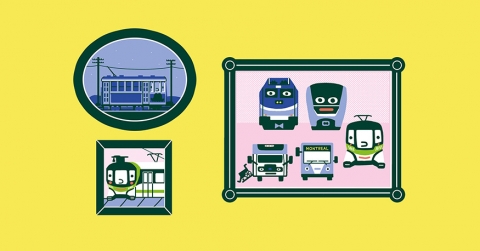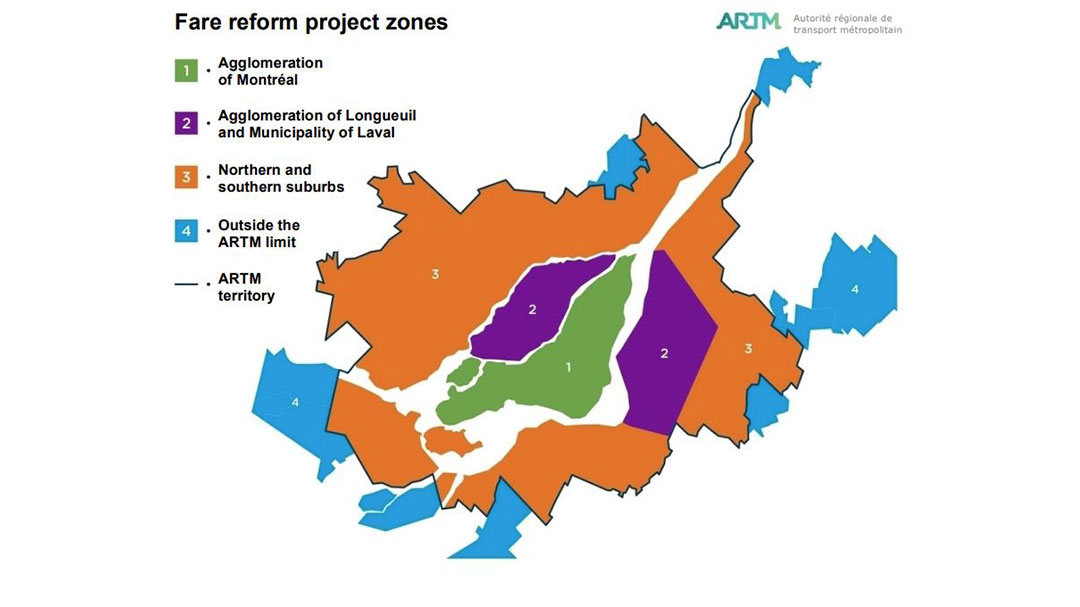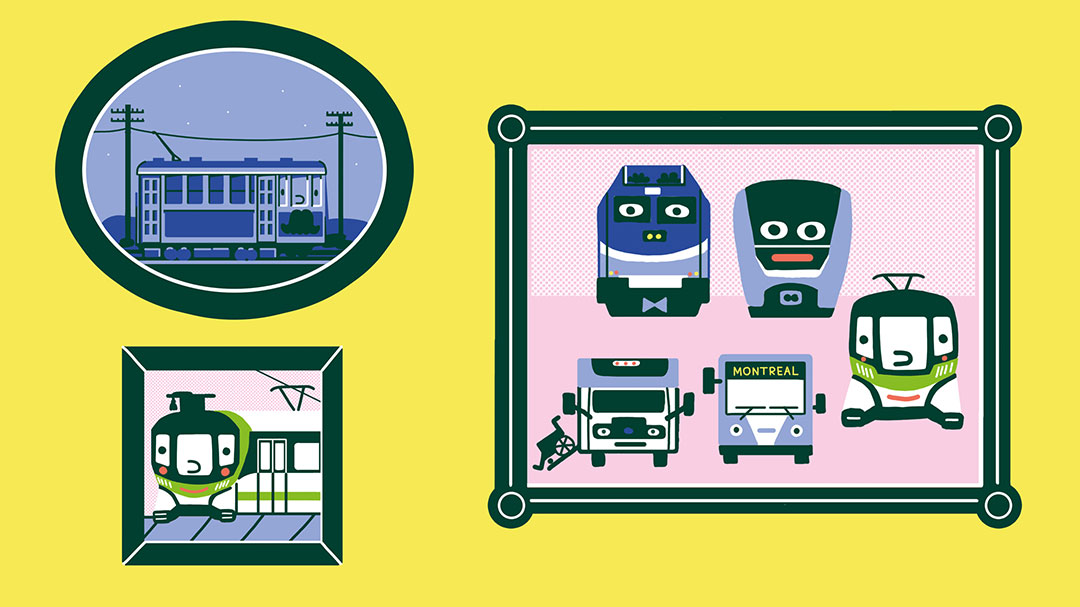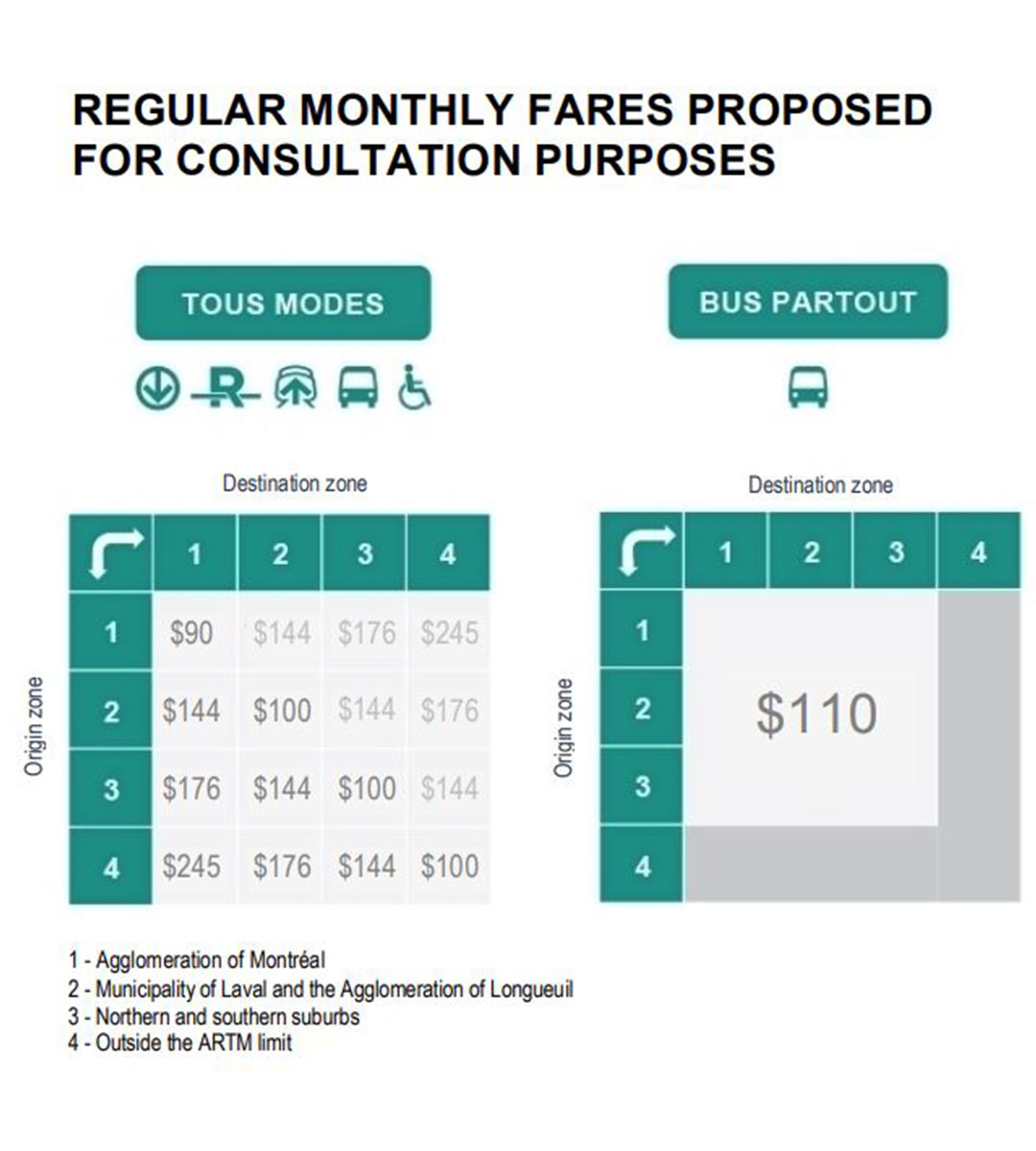
Understand how the ARTM’s fare reform works and how the REM fits into it
Update
ARTM is executing its fare redesign, based on a metropolitan fare system with two families of fares that provide access to more services and more travel options at a constant price: 1. Train, metro, REM and bus services (in short, all the services!) in one or more zones with the « All modes » fares. 2. Bus services in several zones with Bus and Out-of-Territory Bus passes. For more information on the fare reform revealed on April 28th 2022, visit the ARTM website.
At present, 700 different transit fares make up the 17 fare schedules across Greater Montréal. To make things easier for users, the Autorité régionale de transport métropolitain (ARTM), which is responsible for setting fares in the region, is currently conducting a major fare reform project.
After two years of consultation and work by experts, the ARTM submitted a proposal in early September 2020 and is currently conducting a public consultation to obtain the opinions of future users. What follows is an outline of the ARTM proposal and how the REM will fit into it.
Make things easier
“The main objective of this fare reform project is to make things easier for users and to put forward a fully integrated fare structure, which will allow users to travel with ease, whether on board the future REM, the metro, a bus, a train or by paratransit.” -Daniel Bergeron, Executive Director, Transportation Planning and Mobility
1 - Greater Montréal divided into four fare zones
 Fare reform project zones
Fare reform project zones
There are currently eight fare zones in Greater Montréal. Under the proposed project, this number would drop to four:
- Zone 1: Agglomeration of Montréal – the 19 REM stations on the island of Montréal would be part of this zone
- Zone 2: Municipality of Laval and Agglomeration of Longueuil – the two stations in Laval + the three REM stations on the South Shore would be part of this zone
- Zone 3: Northern and southern suburbs – the two stations in Deux-Montagnes would be part of this zone
- Zone 4: Municipalities outside the ARTM’s territory
The REM route would extend over three of the four proposed zones.
Within a single zone, it would be the same price to take the bus, metro, REM, train or paratransit – or a combination of these modes. So in terms of cost, taking the REM would be equivalent to taking the bus or metro.
 Illustration by Vincent Toutou, our illustrator for September. All modes of transportation included in the fare reform are depicted in this portrait of the large public transit family. Also shown is the now-defunct Montréal tramway, as well as the REM.
Illustration by Vincent Toutou, our illustrator for September. All modes of transportation included in the fare reform are depicted in this portrait of the large public transit family. Also shown is the now-defunct Montréal tramway, as well as the REM.
2 - The proposed fare schedule
“How much will it cost to take the REM?”
From the start of the project, this has been one of the public’s most frequently asked questions! The answer lies in the ARTM’s proposal.
The ARTM proposes a very simple fare schedule, one in which the REM would be integrated at the same level as all other transit modes. To find out how much your monthly pass for the REM would cost, you will need to take into account your origin and destination zones.
 The fare schedule proposed by the ARTM for the current public consultation. The 17 schedules across Greater Montréal would be reduced to one. For the bus, a single fare of $110 provides access to all bus services within the territory.
The fare schedule proposed by the ARTM for the current public consultation. The 17 schedules across Greater Montréal would be reduced to one. For the bus, a single fare of $110 provides access to all bus services within the territory.
Scenarios (based on the currently proposed schedule, without accounting for inflation)
- You take the REM at the Brossard station and you work on Montréal’s West Island at the Fairview-Pointe-Claire station. Your monthly fare would be : Origin – zone 2 / Destination – zone 1 = $144
- You’re a professor at UQÀM and you live in Deux-Montagnes. You plan on taking the REM and the metro to get to work each day. Your monthly pass would cost : Origin – zone 3 / Destination – zone 1 = $176
- You take paratransit, the metro and the REM on a regular basis and you make trips around the island of Montréal. Your monthly pass would be $90, since you’re remaining within zone 1.
The price of a single ticket within one zone is set at $3.50. Discussions are ongoing regarding the price of a single ticket to travel from one zone to another.
3 - How can the public express its opinions on public transit fares?
Until October 8, 2020, you can:
- Share ideas by submitting proposals in the suggestion box on the ARTM website.
- Share your thoughts on the four key principles of the fare reform via the digital consultation.
You also have until October 5 to submit a brief. Briefing sessions will begin on October 16, 2020.
For more information on this major project and how you can make yourself heard, visit the ARTM website :